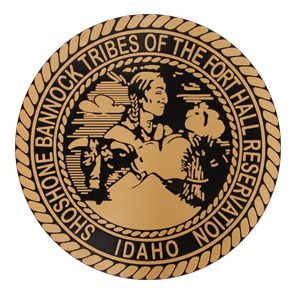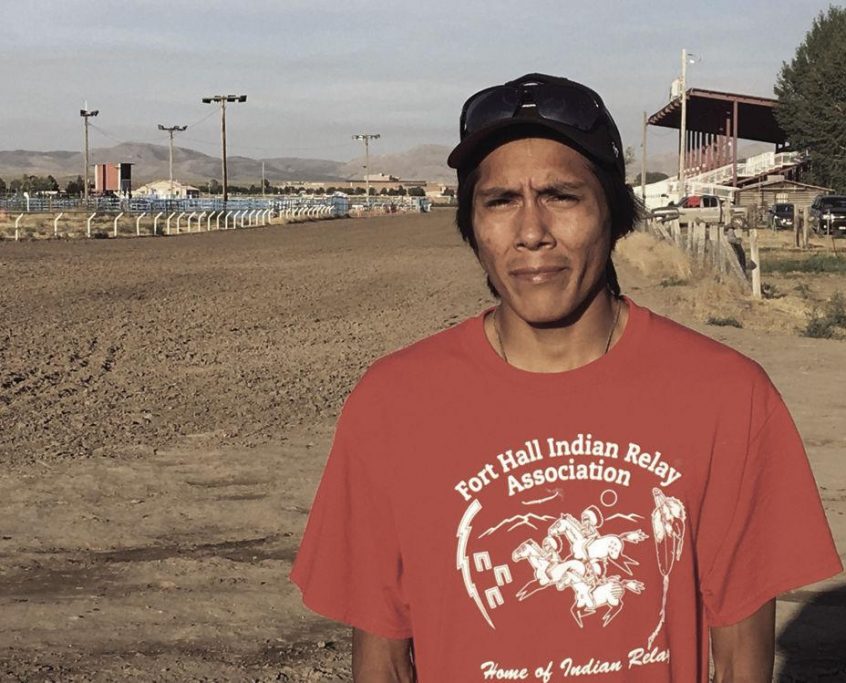Media Share from the Idaho State Journal article published on August 12th, 2020
By Scott Kraus – Idaho State Journal
What’s it like riding a horse on a race track at 40 mph right next to another rider and doing it all while riding bareback?
Intense, says Miaus Teton of Fort Hall, who’s a longtime competitor in what’s known as the oldest extreme sport in America.
Indian relay races are a tradition dating back 500 years. The Shoshone-Bannock Tribes have hosted Indian Relay races periodically at the Fort Hall Fairgrounds race track for many years. Most recently, races were hosted Aug. 7 through Aug. 9.
“It’s pretty much an adrenaline rush,” said Teton, who rides for the Teton Team, which won a race at the track on Aug. 8.
“It gets your blood pumping — gets your nerves all high. I like it. It’s pretty fun.”
The races consist of two competing bareback horse riders each making three complete laps of the race track.
But the riders jump off the horse — when they’re often galloping right next to the competing rider — and mount a fresh horse for each of the three laps.
So that raises a conundrum. How do you control the horses coming into the changeout point at full speed?
That’s where the rest of the team, which is owned by Clarence Teton, comes in.
It consists of a catcher, Tyce Teton, and a holder, Talon Teton.
Those are important jobs. The catcher catches the incoming rider’s horse and the holder readies the next horse and keeps it calm as its waits for the next lap.
That helps prevent pileups at the changeout site.
“You can’t just let the horses come in and go anywhere,” Teton said. “There’d be horses everywhere.”
And what’s the key to winning the race?
One simple word: Instinct.
“I can’t really explain it, it’s just so fast, you know…it’s just all in the moment,” Teton said. “It’s all fast thinking. That’s pretty much all it is.”
But riders and other team members do prep ahead of time as much as they can. That helps.
“We come down and we practice beforehand,” he said. “So you know what you’re doing. And then when you’re going fast it’s muscle memory.”
Teton compares it to being almost like driving a car, in some respects.
“So you know how you drive a car every day — it’s just muscle memory,” he said. “You don’t really think about it. It’s just muscle memory. That’s basically how it is out there.”
But as with cars he says there is potential for injury. And like most any riders in the Indian Relay races, he’s had some knocks over the nine years that he’s been competing.
“Anything can happen,” he said.
He’s been hit by a horse a couple times and run over.
“Sometimes you go to the hospital,” he said. “Sometimes you just walk it off. Go home, take a hot bath, get a massage.”
Meanwhile, it’s not surprising he got into the sport. Teton says racing runs in families.
“I’m like the third generation right now of relay racers,” he said.
He said that the riders in the 1980s have experience so their family has come up and they teach their kids.
“So it’s just generation after generation and we all come here and it’s just fun,” he said. “Thats just how it is — it’s fun.”
And if a team wins, it can be make some money, he said. A three-member team that wins can split several thousand dollars before expenses.
But it’s a challenge to be consistent, he said.
“You could win today. Then tomorrow you could fall off or something else could happen,” Teton said.
Meanwhile, tribal member Dave Archuleta says Fort Hall is known widely for its Indian Relay race teams.
“This is something that’s been going on for the tribes for years,” Archuleta said. “It’s like a festival. We have some of the finest Indian Relay racers in the United States here.”
But the racing, like most events, has been affected by COVID-19.
The teams used to travel quite a bit for races to such places as Montana, Oklahoma, Minnesota and Washington, Teton said.
But not since the virus hit. And they won’t run at the Eastern Idaho State Fair this year, either, he said. But the sport can still use new competitors.
He says if someone wanted to get into relay racing and didn’t have the head start of being from a racing family, he’d suggest they first get in top condition.
He recommends they run, lift weights and start riding horses, if they don’t already.
“The whole nine yards,” he said. “You have to be durable — in good shape.”
And he says you need the right mindset.
What’s the right mindset?
He said: “You have to be a daredevil.”

